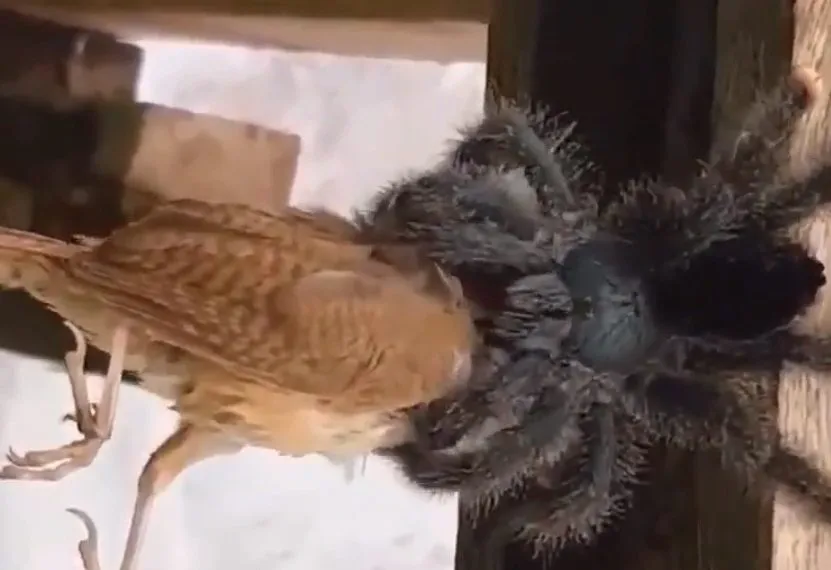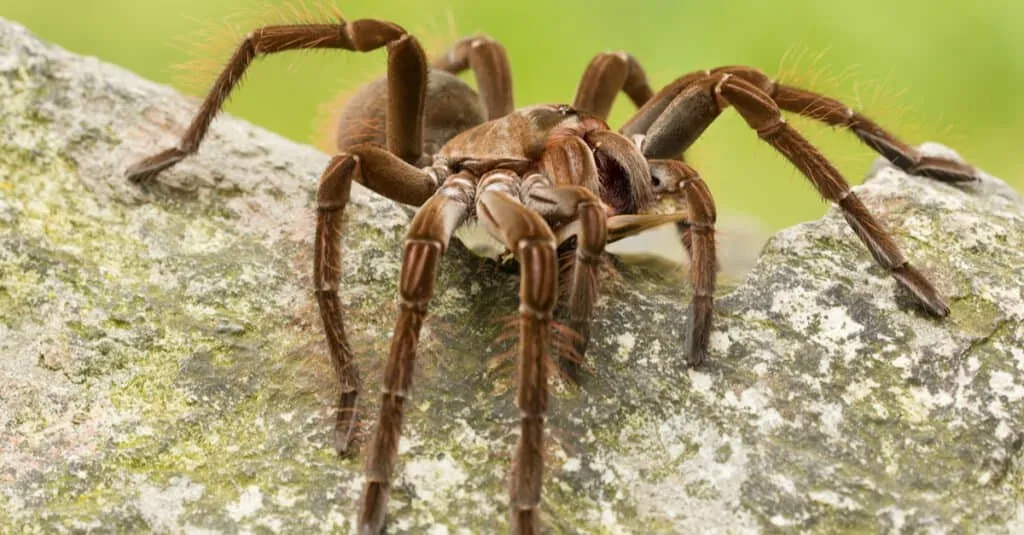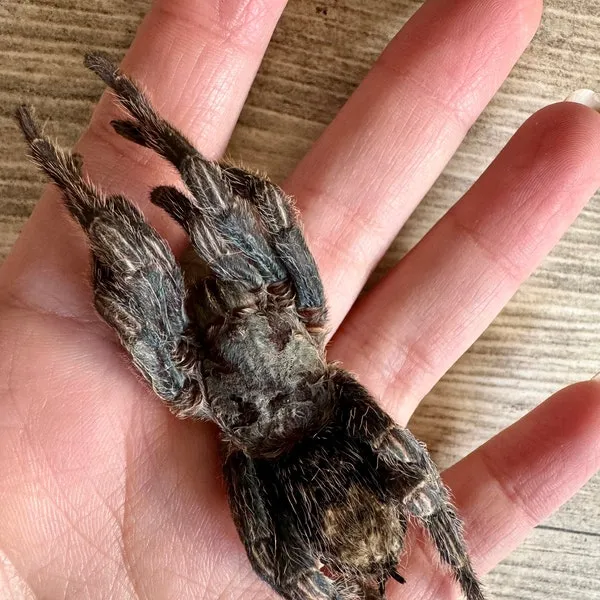What is a Tarantula That Eats Birds
The image of a tarantula devouring a bird is one that captures both fascination and horror. While the name “bird-eating spider” might conjure up images of these arachnids feasting on feathered creatures regularly, the reality is a bit more nuanced. These large, often hairy spiders are impressive predators, but their diet, and the frequency with which they consume birds, varies significantly depending on the species and their environment. Understanding the truth behind this moniker involves exploring their behavior, habitat, and feeding habits to separate fact from sensationalized fiction. Bird-eating tarantulas, or more accurately, tarantulas that occasionally eat birds, represent a fascinating intersection of predator-prey relationships in the natural world, which reveals the adaptability and predatory prowess of these remarkable spiders.
Understanding Tarantula Behavior
Tarantulas are primarily nocturnal hunters, using a combination of ambush tactics and the element of surprise. Their large size and venomous fangs allow them to subdue prey much larger than themselves, although their primary diet consists of insects, like crickets, roaches, and beetles. The bird-eating behavior is opportunistic rather than a dietary staple, meaning that birds are consumed when the opportunity presents itself. This usually occurs when a tarantula encounters a vulnerable bird, such as a nestling or a sick or injured adult. The spider’s behavior is driven by its survival instincts and the need to secure a source of nutrients. Their hunting style also involves the use of sensory organs such as hairs, that detects vibrations and air movement to identify and locate the prey.
The Myths and Realities of Bird-Eating Tarantulas

The name itself, “bird-eating spider,” has led to many misconceptions and exaggerations about their diet. The reality is that birds are a relatively infrequent part of the tarantula’s diet. The popular image of a tarantula dragging a large bird into its burrow is not the norm; it is more likely that a tarantula will eat a small bird that has already died or that is vulnerable due to illness or injury. The myths surrounding these spiders have often sensationalized their hunting capabilities and their aggressive nature, causing undue fear and misunderstanding. While these spiders are predators with potent venom, their feeding habits and overall behavior are more varied and complex than the popularized image suggests. Their role in the ecosystem is also very important.
Habitat and Geographic Distribution
Bird-eating tarantulas are not a single species but rather a group of large tarantulas found in various tropical and subtropical regions. Their habitats range from the rainforests of South America to the woodlands and grasslands of Southeast Asia. These spiders are well adapted to a variety of environments, often creating burrows in the ground or taking shelter under logs, rocks, or in tree hollows. Their widespread distribution indicates their ability to thrive in diverse conditions, although their specific habitat preferences vary depending on the species. They require a humid and warm climate to survive, and they tend to avoid extreme temperatures. Their presence is often associated with abundant prey and suitable shelter.
Where Bird-Eating Tarantulas Live
Their burrows can be found in the soil of the forest floor or under the roots of trees. Some species also construct webs to trap insects and other small animals. The ideal habitat provides adequate shelter from the elements, protection from predators, and access to a reliable food source. The presence of these spiders can be indicative of a healthy ecosystem, as they play a crucial role in regulating insect populations and contributing to the overall biodiversity of their environment. In many areas, they are an essential component of the local ecology, helping to maintain balance within the food web. They like to live in dark, humid environments where they can remain safe.
Ideal Environmental Conditions

The environmental conditions are crucial for their survival. Humidity, temperature, and the availability of food play a vital role. These spiders thrive in humid environments that help prevent dehydration. Temperatures should be consistently warm, with no drastic fluctuations. Adequate moisture is also essential. These conditions are often found in tropical rainforests, where they can hunt and thrive. The presence of a diverse insect population also ensures that the tarantulas have a readily available food source. They are very adaptable but still have specific environmental needs.
Identifying Bird-Eating Tarantulas
Identifying a bird-eating tarantula involves paying attention to both their physical characteristics and their behavioral traits. These spiders are among the largest in the world, with some species boasting leg spans that can exceed 10 inches. Their size, combined with their robust build, distinguishes them from smaller tarantula species. Furthermore, the presence of urticating hairs, which they use for defense, is another key characteristic. Their coloration can vary widely, from browns and blacks to vibrant shades of orange and red, depending on the species and the environment. The best way is to do more research and discover the characteristics that match with your area.
Physical Characteristics
Their physical attributes are striking. The body is divided into two main parts cephalothorax and abdomen. The cephalothorax houses the spider’s head and the appendages used for walking, feeding, and mating. The abdomen is where the internal organs are located. The legs are covered with sensory hairs, and the fangs are large and powerful, designed to inject venom. The size of these spiders is intimidating, making them one of the most recognizable spiders. Their appearance is a clear indicator of their predatory nature.
Behavioral Traits

Behavioral traits also give clues. Most of these spiders are nocturnal, becoming active during the night to hunt. They are generally solitary creatures. Their defensive behaviors can range from fleeing to rearing up on their hind legs and displaying their fangs. They may also use urticating hairs as a defense mechanism. Observing their behavior in their natural habitat can provide valuable insight into their predatory habits and social interactions. They are not aggressive, but they will defend themselves if they feel threatened.
Finding Bird-Eating Tarantulas
Finding bird-eating tarantulas requires patience, knowledge of their habitat, and the right timing. These spiders are elusive, and their nocturnal habits make them difficult to spot. The best approach is to focus on areas where they are known to reside, such as tropical rainforests, woodlands, and grasslands. This search can involve identifying potential burrows or looking for signs of their presence, such as shed exoskeletons or silk webs. Respecting their natural environment and maintaining a safe distance is very important. The best way to find them is through meticulous research.
Best Times for Observation
The best time to observe these spiders is during the evening hours, as they are most active at night. Dusk and dawn are also excellent times to observe these spiders, as they may be more active during the transition between day and night. This is when they often emerge from their burrows to hunt or search for mates. When observing these spiders, it’s important to have proper lighting equipment and be prepared to remain still and patient. Also, using infrared lights can allow you to view them without disturbing their natural behavior. Patience is key when attempting to locate these creatures, as they may be hidden.
Techniques for Locating Tarantulas

Searching for these spiders requires a methodical approach. A good place to start is by looking for potential burrows. These are often found in the soil, under logs, or among the roots of trees. Using a flashlight can help reveal the spiders, as their eyes reflect light. Another approach is to gently sift through leaf litter and debris, carefully inspecting each area. The use of specialized tools, such as a magnifying glass, can aid in identifying smaller signs of their presence, like webs. It is also important to learn about the spider species in your region. You need to study up and learn about what to look for to be successful in your search.
Safety Precautions for Observation
When observing these spiders, safety must always be a top priority. It is very important to maintain a safe distance and avoid any sudden movements that could startle them. Never attempt to handle a tarantula, as they can bite and inject venom. If you are allergic to insect stings, you should be aware that tarantula bites can cause a reaction. Wear appropriate protective gear, such as long sleeves, pants, and sturdy shoes, to minimize the risk of bites or stings. Always be aware of your surroundings and watch out for other hazards such as snakes. Before any observation, it is important to research the local species and their potential dangers. Always respect the spider’s space.
Feeding Habits and Prey
Understanding the feeding habits of bird-eating tarantulas provides crucial insight into their predatory nature and their role in the ecosystem. While the term “bird-eating” suggests a primary diet of birds, their actual prey is far more varied. These spiders are opportunistic hunters that feed on whatever is available in their environment. Their hunting strategies and the types of prey they consume are adapted to their specific habitats and the resources available. Observing their feeding habits is important to understand their behavior and their impact on local ecosystems.
What Bird-Eating Tarantulas Eat

Their diet includes insects, small mammals, lizards, and, occasionally, birds. The majority of their diet consists of insects, such as crickets, grasshoppers, and beetles. They may also consume small rodents and lizards. Birds are an opportunistic part of their diet. When a bird becomes vulnerable due to injury or illness, a tarantula may seize the opportunity. The exact composition of their diet depends on the species of tarantula. This demonstrates their adaptability to different food sources. The size of their prey also is determined by the size of the tarantula.
Hunting Strategies
These spiders use a combination of ambush tactics and venom to capture their prey. They will often lie in wait near their burrows or in hidden locations, ready to pounce. They have specialized sensory hairs, that detect vibrations and air movements, enabling them to locate their prey. Once within striking distance, the tarantula will quickly attack, injecting venom to paralyze or kill the prey. They then use their fangs to inject digestive enzymes, breaking down the prey’s tissues so they can consume them. Their hunting methods are a fascinating demonstration of their predatory prowess.
Conservation and Threats
Understanding the conservation status and the threats facing bird-eating tarantulas is crucial to ensure their long-term survival. Several factors threaten their populations, including habitat loss, the pet trade, and climate change. Conservation efforts are essential to protect these magnificent creatures. The work of conservationists involves protecting their habitats and educating the public about their importance. These spiders play a vital role in their environments, and their survival is important for overall ecosystem health.
Threats to Bird-Eating Tarantula Populations

Habitat loss is a major threat, as deforestation and development reduce the areas where these spiders can live and hunt. The pet trade also poses a threat, as demand for these spiders can lead to over-collection from the wild. Climate change presents a danger, as it can alter their habitats and disrupt their food sources. Pollution and the use of pesticides are other threats. The combination of these factors poses a significant risk to the long-term survival of these spiders. Addressing the threats requires a multifaceted approach.
Conservation Efforts
The protection of bird-eating tarantulas involves several conservation efforts. These include habitat preservation, implementing sustainable practices, and combating the illegal pet trade. Educating the public about their importance and dispelling common myths can help reduce fear and encourage respect for these arachnids. Supporting conservation organizations and advocating for policy changes that protect their habitats are all important contributions. Through conservation efforts, the survival of these fascinating creatures is ensured. Protecting these habitats will allow them to live in peace and also provide a place for them to thrive.
